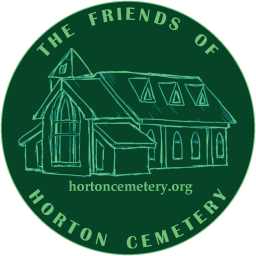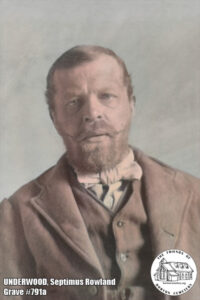b.1886-d.1911
Always deep in thought
John Fuller’s life was short and typically little is known about him. However, the discovery of some of his case notes has given an insight to his troubled mind and what led him to be in Long Grove Hospital.
In the beginning
John Alfred’s parents were Samuel Alfred Fuller and Annie or Jane Eliza Cladish. They were married on 10 October 1883 at St John the Evangelist church in Walworth, London. Samuel aged 24 was a potter whose father had died. He came from Lambeth. Annie aged 20 was the daughter of John Cladish who was described as a Cordial Maker. She was born in Hoxton.
Early Life
The newly married couple set up home in Lambeth. Their first child was a girl named Jane Eliza, born in the June quarter of 1884 followed by John Alfred who was born on 19 August 1886. Both children were baptised together on 10 September 1886 at St Mary the Less church in Lambeth. The family were living at 42 Broad Street in Lambeth and their father was described as a labourer. This was close to the river Thames and a poor area but near to Lambeth Pottery or Royal Doulton Pottery. Samuel Fuller is referred to as a potter or a pottery labourer for most of his life, so this is possibly where he worked.
Over the next 20 years I have been able to trace that Samuel and Annie went on to have a further 7 children –
James William born June quarter 1889
Robert born March quarter 1892
George Henry born December quarter 1894
Edward born about July 1896
Harry born about April 1899
Walter born December 1901
Albert Edward born July quarter 1903
However, many of the children have proved difficult to trace and based on later census entries it seems not many of the children survived into adulthood.
The 1890’s
By the time of the 1891 census the family were living at 12, High Street in Lambeth. Samuel, shown as Alfred, aged 31 a general labourer, Ann aged 28 and two children Jane aged 7 and Alfred (John) aged 5. There is no mention of little James William born 1889 and although I cannot find an entry for a death certificate for him neither can I find any existence of him after his birth I can only assume that he had died. Baby Walter died in the September quarter of 1902 barely reaching 9 months of age.
Again, this address is around the corner from the Pottery and is described on Booth’s Maps as a “mixed area”.
Over this next decade John Alfred saw the arrival of 4 brothers. Robert, George, Edward and Harry. Little Edward did not survive to see his second birthday and in the September quarter of 1899 John’s sister Jane Eliza died aged just 15.
Into the 20th century
The 1901 census sees the family living at 3 Shaftesbury House off Vauxhall Walk. I have found this difficult to place but the areas around Shaftesbury House in Vauxhall Walk range from “poor” to at best “mixed” according to Booth’s Maps. The family group was recorded as follows – Alfred Fuller aged 39 an Earth pottery worker, Annie aged 38, Alfred aged 14 working as an Earth pottery boy, Robert aged 9, George aged 6 and Henry aged 2. Alongside the Fuller family their maternal Grandfather John Cladish, a widower aged 61 was living with them. He was self-employed as an “artist in pictures”. I cannot distinguish the other word except to say it looks like “sculp”.
The family was completed in 1903 by the birth of Albert Edward on 27 April.
Croydon Mental Hospital
It appears that John Alfred suffered a head injury around 1900 but it is unclear whether this caused his mental illness. His admission notes paint a picture of a previously quiet “very steady” young man working at a grocer’s and then a printer’s. There was no sign of what was to follow. The “attack” started on 3 February 1906 and at some stage a Policeman reported he had found John Alfred trying to hit his mother with a chain and threatening to kill himself. From there John Alfred went to Lambeth Infirmary and on 7 February 1906 he was admitted to Croydon Mental Hospital. This establishment had been opened in June 1903 and was the first establishment to be called a “Mental Hospital” rather than an Asylum. It was hoped that the name would help remove some of the perceptions held at the time around mental illness. It had 3 blocks for women and 3 for men and later became known as Warlingham Park Hospital.
An artist’s impression of Croydon Mental Hospital when it opened in June 1903.
John’s case notes
His initial medical notes show his diagnosis was “stuporosed insanity” and we learn that he was a full-term “normal” baby who learnt to walk aged 15 months. At the start of the attack, it was said he talked randomly about heaven and his sister, was suspicious and was frightened he would be injured. The judgement on whether he was dangerous or not varies in the notes. The general judgement on 7 February 1906 was that he was confused, very depressed and extremely frightened. He felt his body was dead and that his spirit had disappeared. He stared fixedly and would not answer questions. His physical condition was poor. He is noted as being a thin young man. Previously deep in thought and a “very steady” person.
Initially he seems to improve over the next few weeks and starts to speak and even does a little work although it is remarked he lacked mental energy. In August he suffered a relapse and was confined to bed and refused to eat or was incapable of swallowing. So, he was fed by a nasal tube. This continued for a while and the notes do not show when he improved. But by January 1907 he remained in a stupor, barely speaking, standing in a lost manner for lengths of time. He was eating indifferently. By July 1907 there was still no change and he rarely spoke and had no interest in his surroundings and his memory was greatly impaired. However, it is noted that he is eating well and that his health has improved.
Transfer to Long Grove and death
There is no reason shown why the decision was made to transfer John Alfred to Long Grove Hospital on 23 September 1907, but he would remain there for the remaining 3 years and 4 months of his short life. He died aged 25 of Pulmonary Tuberculosis as the primary cause of death. He had also been suffering with Enteritis (inflammation of the small intestine) for a few weeks which would have probably hastened his death. He is buried in Grave number 1089a at Horton Cemetery.
After John Alfred
When the 1911 census came along shortly after John Alfred’s death Samuel and Annie had just 3 sons living at home with them. The census completed by the family records there were 9 children born to the couple of whom only 4 children remained alive.
Robert, who was not at home, had gone off to join the Army.
George aged 17 was a printer’s labourer who went off to War aged 18 years and 6 months and never came back. He was killed in action on 14 February 1915 and is commemorated on panel 34 of the Menin Gate in Ypres.
Harry, aged 11, was at school. He later went on to marry Ivy Gertrude Wrate. During the First World War he joined the Royal Navy and served until 1920. The 1939 register shows Ivy living on her own but there is a Harry Fuller aged 40 at Long Grove Hospital. Is this him? And if so, did the same plight befall him as John Alfred? He is not buried at Horton Cemetery so I can only assume his stay was temporary.
Albert, aged 7, was at school also. He went on to marry Winifred Parker and lived until he was 80 years old.
In January 1914 Annie’s father died and there is a Newspaper article that throws some light into his occupation and his circumstances. The Daily Herald dated 14 January 1914 reads:
“OLD PAVEMENT ARTIST’S DEATH. The death of a pavement artist, named John Cladish, 72, of Vauxhall, was inquired into at Lambeth yesterday. “He has tried to out up to the last,” said the deceased’s son, street hawker, who was much moved in giving evidence ” but has had to come back and sit down.” About a fortnight ago the deceased fell and injured his shoulder against the mantelpiece, and later died from heart failure, following bronchitis set up by the accident The jury returned verdict of ” Accidental death.”
Article courtesy of British Newspaper Archives.
Both Samuel Alfred and Annie are still alive in 1921 and the census confirms Samuel is an out of work Stoker at Doulton Potteries. Annie is working at Haywards and Mumford in Kennington. They were living at 32 Old Paradise Street, High Street, Lambeth.
Samuel died in 1932 and I have been unable to trace Annie’s death with any certainty.
Author’s Thoughts
John Alfred’s family appeared to be hard working and lived in tough areas. The inference that some of his siblings did not survive into adulthood suggests some possible malnutrition and poor living conditions. His admission notes state that some of his family died of consumption. Perhaps this is what his older Jane Eliza died of aged 15. Sadly, his fears turned out to be real as he died of the same disease. It seems that he missed his sister and was affected by her death as his admission notes to Croydon Mental Hospital mentioned that at first, he spoke “at random of Heaven and his sister”.
The fact that he is always referred to as “stuporous” suggests that he had a decreased responsiveness to his environment. What exactly triggered this is a mystery. The notes paint a picture of a sad, quiet and frightened young man locked in his own world, scared he would come to harm and was unable to communicate his feelings and fears. In the end despite support he died mentally alone and although surrounded by other people no one could reach him.




